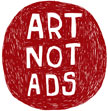
I read an unsettling
article the other day about the Cushing Academy, a prep school for children and young adults, that is eliminating its library of 20,000 books. The headmaster, Dr. James Tracy justified his decision this way: “You know [holding up a book], if I look at this book I am struck by how limited it is. This is pretty bulky. I don’t mean to belittle or disparage it. I love books, and I love the representation of culture that they embody, but, from an information perspective, this is a very, very bulky way to reposit data by today’s standards.” A book is too bulky? Has anyone tried to snuggle into bed with a Kindle?
Instead of books Tracy will provide computers which he has named “Portals of Civilization”. I hope you understand, dear readers, that the information you seek is chosen for you - as in any analog collection. But many of your online sources are chosen by Google and other filters. And if we’re talking books, for example, they have to be copyright free. You'll need to supplement! While it may seem convenient as you sit in front of the laptop eating crackers over the keyboard, nothing beats the serendipity (there’s that word again, MM ;) ) of browsing in the stacks. Here’s an interesting
study taken from student discussion groups across the country. Some of their observations about research in the digital age describe how students waste time online not knowing what to look for, yet still sift through articles trying to make them fit their needs, or try to figure out if an article is up to date, or whether something is from a credible source. This article, “
Google Book Search: A Disaster for Scholars” ought to give an institution pause before hurling themselves fully into the digital zone without the infrastructure to support the idea. Google makes mistakes, the article tells us, my favorite being a misattribution of the following book,
The Mosaic Navigator: The Essential Guide to the Internet Interface, which Google dates 1939 and attributes to Sigmund Freud and Katherine Jones.
In place of the stacks the Cushing Academy spent $42,000 on 3 flat screen tvs that will project data from the internet. The reference desk was removed to make way for a $12,000 cappuccino machine. When I was 13, I did not drink coffee, and the last place I wanted to hang out socially was in school. But school and city libraries were always an escape, a place to explore books in peace. They are the most comforting places in the world to me, libraries, full of possibility, imagination, offering answers to all my questions, or raising questions, which is even better. In a time when most of us are tethered to our computers and gadgets, the physical sensation of turning a well-worn page offers a form of respite that cannot be replaced. There's also plenty to admire in the physical, like the well-worn publisher's binding of something other than a mass market paperback. As a friend's shrink used to say, I think what we're looking for here is a balance. The Cushing Library states that few of their books were checked out. I think it's up to the Cushing Library to make their library truly relevant to their students.
As for online resources, I know Teen Second Life has got some wonderful projects that would put Dr. Tracy in a happy technological flutter. And, for you older folks, our Second Life libraries can be great…just visit the
Alliance Library blog for access to a variety of in-world collections. I look forward to how online collections will develop. A really fine afternoon can be spent at the
R.F. Burton Library in New Babbage (shown in the photo above). Click on the stacks and you’ll have immediate access to a wide of subjects (online books from credible sources!) having to do with Steampunk and Victorian history and literature, domestic science, and spiritualism. I’m particularly proud to be a member of the
Caledon Libraries, who set the bar for sharing access to library collections.
There are so many different ways to uncover information and become literate, and you students of life and students of schools have to know how to find stuff in a myriad of ways. But remember, as my friend Matthew says, no one beats the
book’s terms of service.















